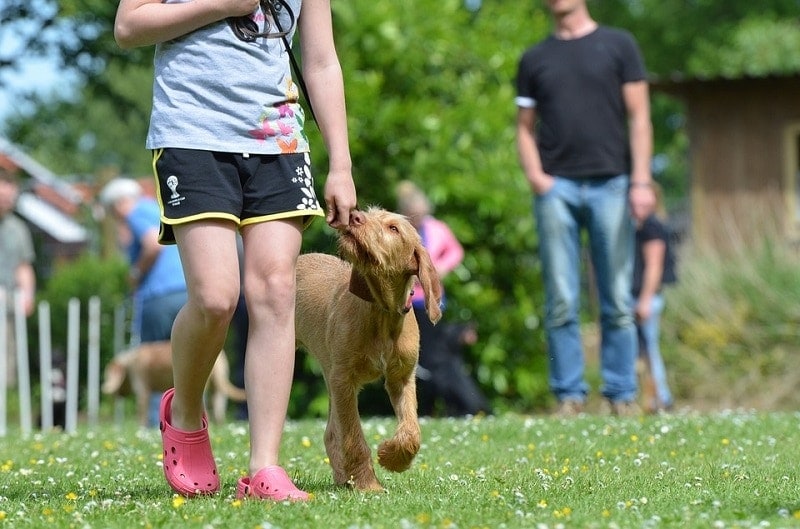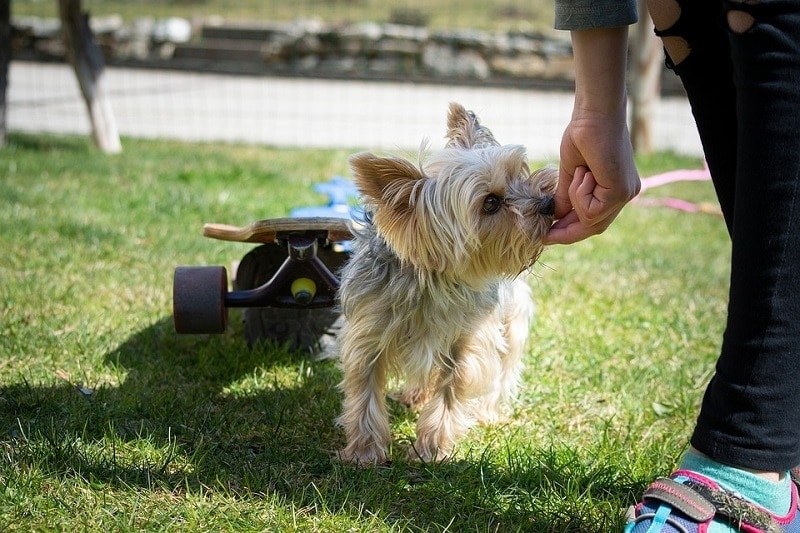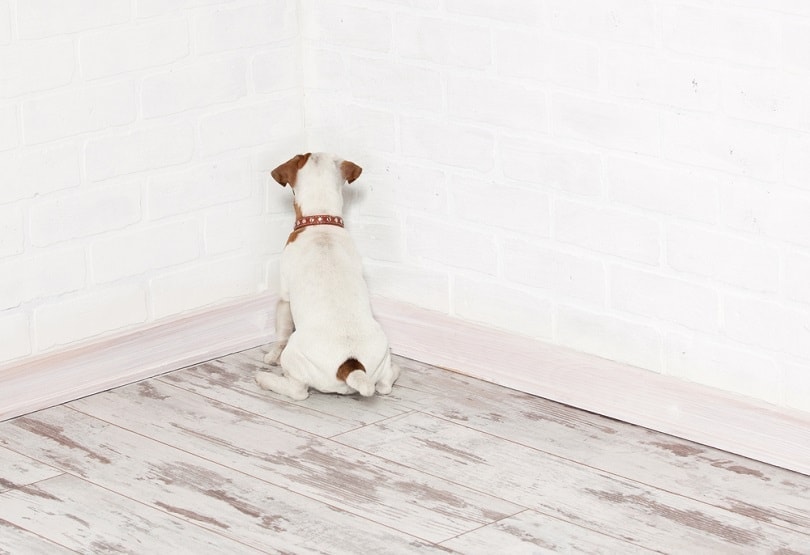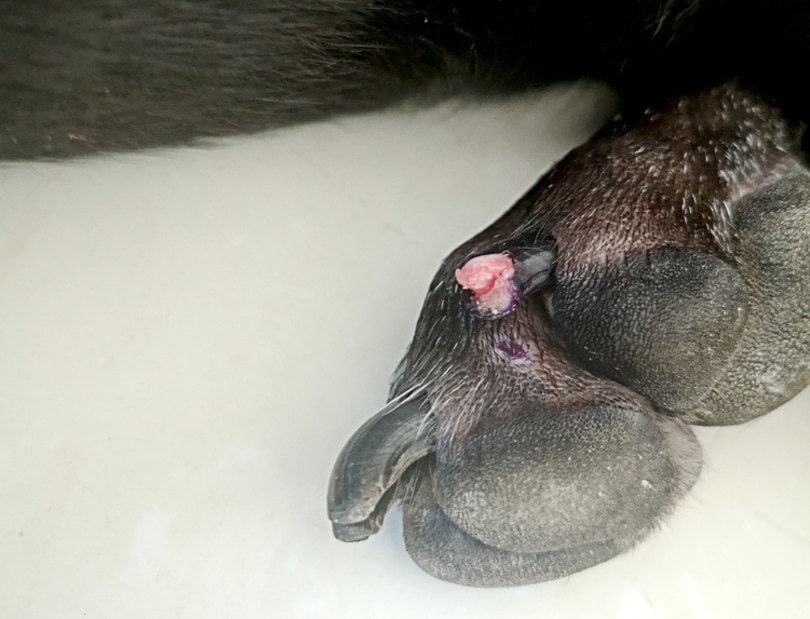Positive Reinforcement vs. Correction Dog Training Methods: Which to Choose?

Updated on

If you want to start a fight between dog owners, the best way to do it is by critiquing the various schools of thought regarding training methods.
The two most popular methods are positive reinforcement and correction training. The former involves rewarding desirable behavior while ignoring problematic actions, while the latter relies on punishing unwanted behavior to ensure that it doesn’t continue to occur.
Correction methods have been more popular historically, but recently, the balance of power has begun to tilt toward positive reinforcement. More and more professional trainers are relying on praise-based methods rather than punitive ones; however, many prominent trainers still swear by the old ways.
We’ll take a look at both methods, including the areas in which they excel and those in which they don’t. The end goal will be to determine which method is best for training your dog, so you can have a calm, well-behaved pooch.
 Dog Correction Methods: Positive Reinforcement
Dog Correction Methods: Positive Reinforcement

The idea behind positive reinforcement is that dogs will naturally seek to model behaviors that earn them rewards. For example, if your dog learns that they get a cookie for peeing in the yard and peeing in the house gets them nothing, they’ll be motivated to hold their bladder until they get outside.
Most rewards come in the form of either praise or treats; however, many trainers also use clickers as a substitute for either reward as well.
That doesn’t mean that there aren’t any consequences for misbehaving, however. It’s just that those consequences usually come in the form of losing rewards rather than being scolded or physically reprimanded.
What Do Critics and Proponents Say about Positive Correction
Critics of positive reinforcement call practitioners “treat slingers.” They feel that it’s a form of buying good behavior and that it doesn’t create permanent enough change. After all, why should your dog continue doing what you want them to do when the rewards stop coming?
Believers in positive reinforcement claim that the exact opposite is true. They’ll admit that using only positive techniques takes longer to create results than correction methods, but they say that the behaviors will be much longer-lasting. They also claim that these methods are much more effective when dealing with extreme misbehavior, such as dogs that are believed to be impossible to rehabilitate.
Proponents of positive reinforcement believe that corrections-based training focuses far too much on punishing negative behaviors. As a result, all a dog learns is what not to do, and they get little instruction as to what behaviors are actually expected of them.
This creates a dog that’s “not bad” rather than one that’s actually well-behaved.
What Is Positive Reinforcement Good For?
Positive reinforcement is excellent for creating trust and love between you and your dog. You’ll frequently be rewarding your dog with love or treats, and you’ll never have to be mean to them, so they’ll naturally come to bond deeply with you.
Dogs that have been neglected or abused are more likely to respond favorably to positive reinforcement as well. They’re likely to be sensitive toward physical correction, so any reprimands are liable to set them off or cause their behavior to be even more entrenched.
By being loving and patient with them, though, you allow them to learn new ways to interact with others. This can be useful for breaking patterns, as they’ll quickly learn that lashing out earns them nothing, while being polite gets them all sorts of wonderful things.

What Is Positive Reinforcement Not So Good For?
Positive reinforcement takes time. Your dog has to learn to associate proper behavior with the reward that they receive for it, and that takes hours of repetition.
As a result, if you have an emergency training situation, positive reinforcement may not be your best bet. For example, if your dog is showing signs of aggression, you may not want to wait days or weeks for the training to take effect.
However, in cases such as those, the dog will likely need quite a bit of intensive training regardless. That likely means also limiting their reactions with other people or pets.
Positive reinforcement won’t help if you have a dog that’s aggressive toward people and you’re hosting a dinner party tonight, but nothing will, in that case. You’ll need to take your dog out of circulation for as long as it takes to deal with their behavioral issues. The fact that positive reinforcement is relatively slow isn’t such a negative in the long run.
- Gentle training method
- Creates a deep, trusting bond between owner and dog
- Good for abused animals
- Takes a long time to work
- Can feel like bribing dog to behave
 Dog Correction Methods: Corrections-Based Training
Dog Correction Methods: Corrections-Based Training

There are many different types of corrections-based training, but they all revolve around the same basic idea: Your dog needs some sort of “correction” every time they misbehave in order to learn not to repeat problematic behaviors.
These corrections can vary wildly, from shock collars to verbal reprimands. Some people even advocate methods that verge on abuse, but they’re not taken seriously by behavioral scientists or most mainstream trainers.
It’s important to note that the idea behind the corrections is not to cause pain; rather, it’s to redirect your dog’s attention back to you. Many corrections-based practitioners say that this is the primary failing of positive reinforcement, as the lure of a treat or some praise will never be more attractive than lashing out at another dog or chasing a squirrel.
By correcting your dog, you stop them from fixating on whatever’s causing their bad behavior. You can then resume training normally.
It’s also important to realize that corrections-based training is more of a technique than a philosophy. Many proponents use positive reinforcement to teach a dog how to behave, then only issue corrections when the dog deviates from that behavior.
What Do Critics and Proponents Say about Corrections-Based Training?
The most common criticism is that corrections-based training is abusive. This is absolutely true in some cases, but it’s not quite so clear-cut with proper corrections training. Again, the idea is never to cause pain.
Another criticism is that this training often teaches dogs to suppress their feelings rather than work through them. That can lead to aggression building up until the dog can’t hold it in anymore, at which point, the ensuing outburst is far worse than it would otherwise be.
Believers in corrections-based training say that it mimics the way that dogs naturally learn to behave. After all, puppies are often physically reprimanded by their mothers, as they’ll receive a sharp nip whenever they misbehave.
They also believe that corrections are the only way to deal with serious behaviors like aggression. They believe that a correction is necessary to refocus the dog’s attention, as they’re unlikely to even notice the prospect of a treat in the heat of the moment.
What Is Corrections-Based Training Good For?
Corrections-based training is good for producing immediate results. If you’re afraid that your dog is about to attack a person or pet, a sharp correction can break their focus and reset their emotional state.
It’s also a good way to get your pup’s attention. Many dogs will ignore a treat if something more interesting is going on, but few can ignore a loud command or a sharp pop of their leash — at least at first.
However, you should realize that your dog can also become accustomed to corrections-based training. While that loud command or popped leash may get their attention in the beginning, they can grow acclimated to it over time. You’ll then need to keep ramping up the intensity of the correction, which is neither sustainable nor advisable.

What Is Corrections-Based Training Not So Good For?
It’s not ideal for creating lasting behaviors. Issuing a correction is like putting out a fire without addressing the cause; while it may stop your home from burning down at that moment, it won’t prevent future flareups.
Also, if all you do is correct your dog without teaching them alternative ways to behave, the behavior will never stop. Your dog will just resent the constant punishment, at which point, they’ll start to ignore you (or worse, lash out).
If you use corrections-based training, it’s probably best if you only rely on it in the short term. Eventually, though, you’ll need to rely on teaching your pup how to behave rather than just punishing them for misbehaving.
- Produces immediate results
- Good for redirecting attention
- Mimics the way that dogs are taught by their mothers
- Can cause issues to fester
- Only good for short-term use
- Dogs can become immune to it

What About a Hybrid Approach of Positive Reinforcement & Correction-based Training?
You may be wondering why you have to choose one or the other. Wouldn’t a hybrid approach work?
As a matter of fact, corrections-based training is sort of a hybrid approach. It relies on positive reinforcement to teach desired behaviors and only uses corrections to ensure that those behaviors are followed at all times.

Proponents of positive reinforcement would argue that there’s never a reason to issue a physical or verbal correction and that doing so defeats the entire purpose of using positive reinforcement. However, it should be noted that even strict positive reinforcement advocates do use a correction of sorts.
That correction is: nothing. By ignoring unwanted behaviors, positive reinforcement trainers are depriving the dog of the attention or treats that they crave.
This can also take the form of depriving them of things that they want. For example, if your dog likes to pull while on the leash, you can simply stop and wait for them to stop, or you can immediately turn the other direction. The dog will soon learn that the only way that they get to go in the direction that they want is if they behave.
Important Things to Keep in Mind Regardless of What Method You Use
Positive reinforcement and corrections-based training have much in common, and there are certain things that you should be cognizant of, regardless of which method you end up choosing.
The most important thing is to be consistent. Your dog needs to learn that a certain behavior will always produce a certain result; otherwise, all your efforts will be wasted. Inconsistency will only confuse them and greatly increase the amount of time that it takes to see results.
Regardless of whether you’re rewarding or correcting behavior, you need to do it quickly. The reaction has to come immediately after your dog’s action, or they won’t form an association between the two things.
Be aware of your body language as well. Dogs are extremely receptive to bodily cues, so make sure your body doesn’t contradict what your voice is saying. Move slowly but confidently, and use touch and eye contact sparingly.
Conclusion: Dog Correction Methods
Both positive reinforcement and corrections-based training are popular methods of shaping canine behavior, and it’s up to you to decide which one is better for your dog.
We believe that positive reinforcement is the best method available, as it produces long-lasting results while strengthening the bond between you and your dog, but there are certainly arguments to be made in favor of using corrections (most notably, the speed at which it works).
The most important thing is to be consistent with whatever method you use, and never hit or abuse your dog. As long as you present a confident, loving demeanor, your dog will likely respond to your training method of choice.
Featured Image Credit: Pezibear, Pixabay
 Dog Correction Methods: Positive Reinforcement
Dog Correction Methods: Positive Reinforcement











